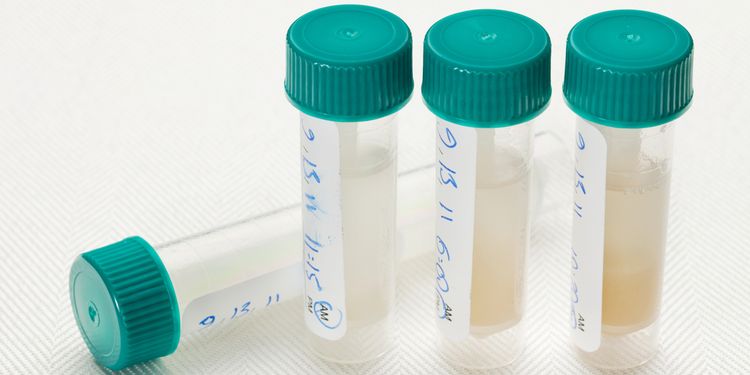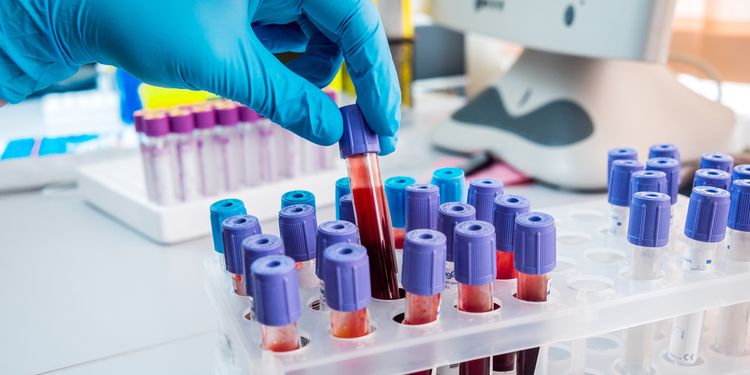The Adrenal Function Tests That Are Worth Your Money

Adrenal fatigue and adrenal exhaustion have become two of the most common phrases to describe the chronic sleepiness that many of us experience each and every day.
Associated symptoms may include being a “slow starter” in the morning, afternoon fatigue, brain fog, cravings for salt or sweets, difficulty staying awake and/or asleep, constantly feeling overwhelmed, dry skin, getting sick often and headaches.
Modern society is notorious for delivering an endless supply of stimulants that chronically activate our stress pathways. Because of this, our sympathetic nervous system, also known as the “fight or flight” response, tends to get over-activated.
Over time, this can lead to an inability to produce the necessary levels of stress-response hormones like cortisol, epinephrine, and norepinephrine, which are required in adequate amounts for the body to maintain homeostasis in the midst of environmental stressors.
If you suspect you may be suffering from adrenal dysfunction, it may be in your best interest to actually know your state of adrenal hormone production. Functional lab testing is very easy to do and is becoming more common, more publicly available, and less expensive. And while you can order many lab tests on your own without a practitioner, the challenge is knowing which tests are the most useful for your situation and how to interpret the results. This is where integrative physicians, functional practitioners, and advanced health coaches can really add value.

Testing for Adrenal Function
When analyzing adrenal function, you have the option to check hormone levels via blood serum, dried blood spot, saliva, 24-hour urine, or dried urine. While each practitioner tends to have a preference, all methods are theoretically valid, but some offer greater physiological insights.
At minimum, the hormones that should be tested include four samples of free (unbound) cortisol and at least one sample of DHEA sulfate (DHEA-S). DHEA is an anabolic steroid hormone produced in the adrenal glands, brain, and gonads that essentially acts as a counterbalance to cortisol. Ideally, you’d want to simultaneously look at progesterone, melatonin, testosterone, and estrogen as well, along with their metabolites. These hormones and metabolites can provide great clinical insight to a savvy practitioner or health coach.
Saliva Testing

When it comes to functional adrenal lab testing, saliva has probably been one, if not the most common, method for assessing cortisol rhythm. Salivary cortisol levels contain free (unbound) cortisol, so there’s no need to separate the bound from unbound molecules.
This method is also very practical, as you can fill a vial with saliva four times a day in the comfort of your own home.
All that’s required is an inexpensive, easy-to-use kit. Most lab companies now offer everything you need, including materials to ship the completed test specimens back to the lab through FedEx or UPS. It really couldn’t be simpler.
And while the accuracy of salivary free cortisol, DHEA, melatonin, and sex hormone levels can be sufficient, the drawback is the inability for the labs to process hormone metabolites. While this may not be 100% necessary, the additional details have the potential to contribute important clinical insight.
Additionally, test results can be inaccurate if you’re currently on sublingual hormone therapy or are using vaginal hormone creams. That said, saliva testing from a quality lab has been a very common industry standard since its introduction and is a method of testing accepted by a number of government agencies, including NASA and the NIH.1,2
Strengths: Convenient, affordable, widely accepted, thought to be accurate, works well if oral estrogens and DHEA are currently used (if quality laboratory).
Weaknesses: No hormone metabolites, inaccurate if sublingual hormones or oral progesterone is currently used.

Blood Serum Testing
Blood serum cortisol levels will include both the free form, which is available to cells, and the bound form, which is not.
Levels of free cortisol tend to be of the most clinical significance, and you must make sure these levels are distinguishable from the bound fraction or combined total. But in terms of testing blood cortisol levels, the biggest issue is a practical one.
In order to understand adrenal function, you must look at various cortisol levels throughout the day and/or night to establish the diurnal pattern. Total daily cortisol levels are fairly useless unless you record the daily pattern as well.
The standard method among functional and integrative practitioners is to test four values throughout the day. This usually requires readings at 7am, 12pm, 4pm, and 10pm or thereabouts. As you can imagine, getting your blood drawn four times in a single day becomes quite impractical.
Strengths: Affordable, very accurate for measuring total levels of various hormones.
Weaknesses: Inconvenient for measuring cortisol rhythm, no hormone metabolites, inaccurate if sublingual hormones, vaginal creams, or oral progesterone is currently used.

Dried Blood Spot Testing
In order to get around the issue of practicality, a dried blood spot method was developed so that you can prick your finger four times a day and collect the individual samples on a filter card, which allows the blood spots to dry before they’re sent back to the lab. This can be done in the comfort of your home and is quite simple.
The advantage of both blood testing methods is the ability to test a number of other hormones that aren’t available with other methods like saliva or urine. Additionally, blood tests tend to be more accurate than saliva collection if you’re on hormone therapy.
However, blood serum and dried blood spot values don’t include adrenal hormone metabolites. And while dried blood spot testing may have the potential to be an accurate and accepted method, it’s certainly not widely used or generally accepted in the health industry to test for cortisol and DHEA-S levels.
Strengths: Convenient, affordable, supposedly accurate, ability to test a number of hormones.
Weaknesses: No hormone metabolites, not widely used in the industry, inaccurate if sublingual hormones, vaginal creams, or oral progesterone is currently used.

24-Hour Urine Testing
There are two options when it comes to urinary testing of adrenal function.
The first is a 24-hour test where you collect all urine in a 24-hour period. This method faces similar shortcomings as that of blood serum testing; it lacks the ability to show a daily free cortisol pattern, it’s fairly impractical, and testing for testosterone levels can produce erroneous results if you have a testosterone metabolism defect.
Strengths: Affordable, accurate for measuring total levels of various hormones, ability to measure hormone metabolites.
Weaknesses: Unable to measure cortisol rhythm, inaccurate if sublingual hormones, vaginal creams, or oral progesterone is currently used, testosterone testing may be inaccurate if genetic defect exists, results may be inaccurate if kidney issues exist.

Dried Urine Testing
The second type of urine test is called dried urine testing, which is quite accurate and full of information; it has quickly become a favorite in some integrative practitioner and functional medicine circles.
While this newer method doesn’t have the extensive history and government backing that salivary cortisol tests have, there’s evidence to suggest that it may be the most useful method for testing cortisol patterns, DHEA-S levels, and sex hormones and their associated metabolites while still maintaining accuracy.
Sublingual and vaginal hormone creams won’t affect the results, but any hormone therapies that are swallowed likely will. If you have kidney issues that cause abnormal creatinine excretion, the overall results may be compromised.
Strengths: Convenient, affordable, gaining acceptance, thought to be accurate. ability to measure hormone metabolites, accurate if sublingual hormones or vaginal creams are used.
Weaknesses: Inaccurate if sublingual hormones are swallowed, testosterone testing may be inaccurate if genetic defect exists, results may be inaccurate if kidney issues exist.
Summary
Keep in mind that testing for cortisol or any other hormone can provide only a snapshot of a given hour or day. As stress levels rise or fall depending on the hour or day, so too can levels of a variety of hormones.
Additionally, sample qualities and lab procedures vary enough that you’ll have to accept a potentially imperfect result and a given standard of error.
Results should only be used to identify general patterns, with the understanding that the results produced in that test may or may not be precisely representative of your everyday status. If you were to take this test every day for a week, you can be sure that the results would vary based on your daily stress load, sleep, female cycle, and mental/emotional state. Theoretically, the pattern should remain fairly similar each day for a given stress load.
The goal is to identify areas of dysfunction that can then be used to determine potential contributing factors from your local environment, diet, or internal imbalances. This is where a competent practitioner or functional health coach can assist.
Test results and thorough questionnaires about health history can be used to identify a primary adrenal dysfunction such as Addison’s Disease or secondary/tertiary adrenal dysfunction that originates in the brain, such as Cushing’s Disease. However, these two conditions seem to make up only a small fraction of the adrenal dysfunction cases in the western world.
It seems the most common sources of adrenal dysfunction today can be attributed to our modern lifestyle, made up of technology, artificial lighting, poor food choices, lack of sleep, lack of community, and too much mental/emotional stress.
As such, the most powerful thing you can do is identify and reduce stress. Many of us can identify clear stressors in our lives, but often it can be the hidden ones that sabotage our health.
Working with a functional practitioner can be a very effective way to identify hidden stress caused by diet, your local environment, structural alignment, poor digestion, gastrointestinal infections, a dysfunctional immune system, or chronic inflammation. This person should be able to guide you in ordering the proper adrenal stress test, and getting you well on your way to wellness.
